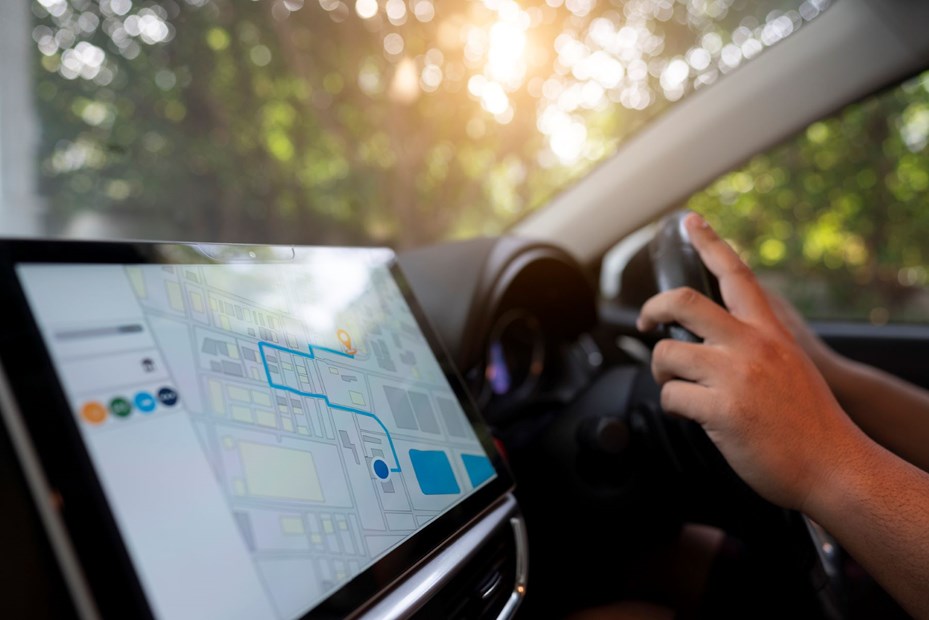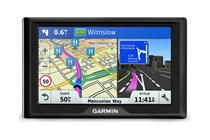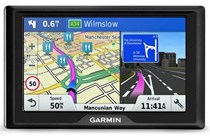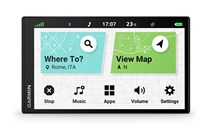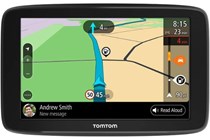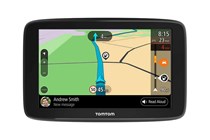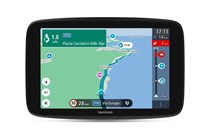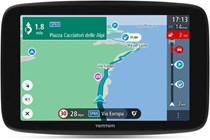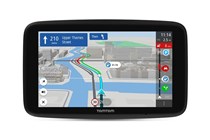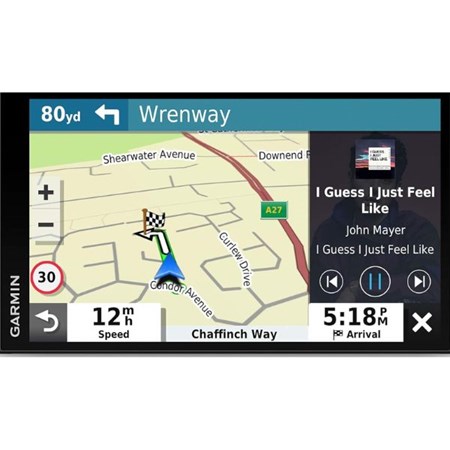Smartphone sat nav apps like Google Maps have made them the go-to choice for many drivers. Real-time traffic updates, turn-by-turn directions, and points of interest – what’s not to like? However, despite this, dedicated sat nav devices continue to hold a significant place in the market.
One of the main advantages of dedicated sat nav devices is that they have been designed specifically for navigation purposes, with some devices designed specifically for larger vehicles like campervans. Unlike smartphones, which are multi-functional, sat nav devices are optimized for one thing and one thing only – guiding you through your journey. No pausing to accept calls or messages, no losing direction as you change the playlist playing through the in-car entertainment system, plus they often come with larger screens that provide clearer, more detailed maps and are easier to read at a glance while driving.
Apps like Google Maps are frequently updated, but dedicated sat navs often offer additional features such as advanced lane guidance, speed camera alerts, and points of interest. These features can make life so much easier when driving in unfamiliar areas. Additionally, sat nav devices have built-in GPS receivers that maintain a more stable and accurate connection than that of a smartphone. This can be a huge benefit if travelling for long distances or driving in remote areas where mobile data coverage might be patchy.
The best sat navs at a glance
If you are looking for superior performance, detailed navigation features, and more reliable GPS connectivity, a dedicated sat nav device is the logical choice.
The best sat navs
Editor's choice
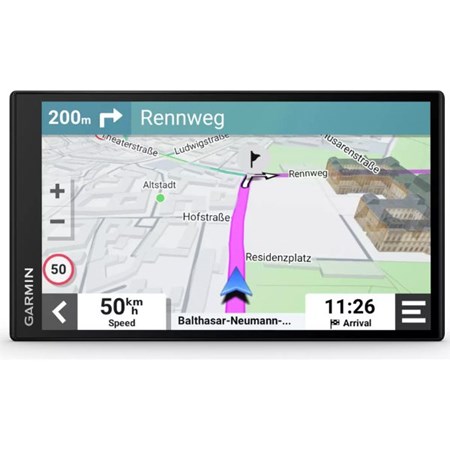

In terms of its navigating capabilities, the DriveSmart 76 is first class. The seven-inch screen is about as large as is practical in a car, and the graphics are crisp and smooth. If you need directions on the move, you can use the Garmin voice control and with the Garmin Traffic function, you don’t have to fret about congestion and delays. It’s a superb option for those who love and use gadgets and connectivity.
Naturally, there is Wi-Fi for easy downloads of map updates, but one of the other features we really approve of is the use of TripAdvisor, which allows you to see ratings of places you’re planning to visit. This is a neat idea and goes well with the Trip Planner function.
Pros
- Loads of smart functions
- Easy navigation
- Large, clear screen
Cons
- TomTom GO Discover has better maps
| Screen size | 7-inch |
| 3D buildings | Yes |
| Wi-Fi | Yes |
| Voice control | Yes |
| Map coverage | Europe |
Best for intuitive use
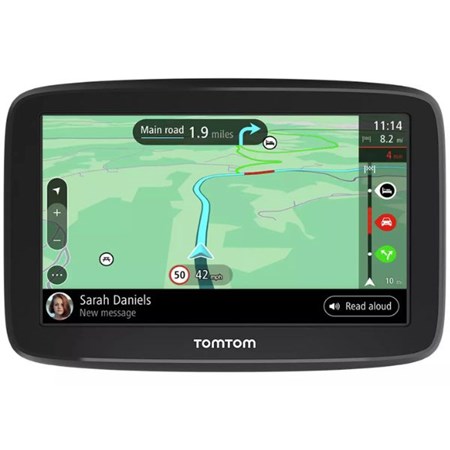

Combined with the speedy upgrades, we really like how easy the whole interface is – it's simple and intuitive. You can choose between five, six, or seven-inch HD screens. We reckon the six-inch screen is the size to go for. On that model, you can enjoy the 3D buildings and clear lane guidance instructions.
Pros
- Incredibly accurate maps
- Great user interface
- World coverage
Cons
- Garmin is better for smart features
| Screen size | 5, 6, or 7-inch |
| 3D buildings | Yes |
| Wi-Fi | Yes |
| Voice control | Yes |
| Map coverage | World |
But the main reason the 65 MT-S is here is because of the very impressive lane guidance. On the screen, there are pictures of the road signs you need to watch for and clear diagrams, in addition to the voice guidance. The 65 MT-S takes all the angst out of negotiating a behemoth of a junction.
In terms of handy stuff for tourists, there are two gems. One is TripAdvisor, allowing you to review hotels and places of interest. Foursquare user data is also included.
Pros
- Great value
- Fantastic guidance
- Lots of drive and travel features
Cons
- Set-up instructions could be better
| Screen size | 6.95-inch |
| 3D buildings | Yes |
| Wi-Fi | Yes |
| Voice control | Yes |
| Map coverage | Western Europe |
Best basic system
The screen may be basic compared to others, but there's no way you’ll misinterpret it. Crucially, you still get free map updates that you can access via Wi-Fi – and the map coverage is for Europe. Plus you get free TomTom traffic which will help plan your journey and avoid delays.
You can choose between a five- or six-inch screen, and you won’t go wrong with either. The GO Basic is like a quality budget dash cam: functional, easy to use, and effective.
Pros
- No flim-flam
- Easy to operate
- Full Europe map coverage
Cons
- The screen can lack sensitivity
| Screen size | 5-inch |
| 3D buildings | No |
| Wi-Fi | Yes |
| Voice control | No |
| Map coverage | Western Europe |
Best for larger vehicles


In addition, millions of preloaded points of interest are available to you. However, TomTom also offers the Camper Go Tour model. It's smaller and cheaper, but it drops some features.
Pros
- Live traffic and speed camera info free
- Scenic route-biased
- Cheaper Tour model also available
Cons
- Requires smartphone connectivity to get live traffic updates
| Screen size | 7-inch |
| 3D buildings | Yes |
| Wi-Fi | Yes |
| Voice control | Yes |
| Map coverage | World |
FAQs
What makes a Sat Nav better than a navigation phone app?
A quality sat nav is far more detailed than Google Maps or a basic navigation app. In some sat navs you will even find buildings and terrain shown in 3D, making navigation through big, complicated city road networks far easier. Sat navs also have larger, clearer screens than those on a smartphone.
Tried and tested sat navs often have better live traffic information and lane guidance software. This is a crucial factor when sat navs compete with apps in cities. Navigation apps are more commonly used in urban and suburban zones because these apps usually rely on a mobile connection, which tends to get sketchy out in the middle of nowhere. Thus, sat navs need to outperform the apps in the complex tangle of city roads – and they do.
Outside of urban areas, sat navs will keep working (unlike navigation apps) because they operate using GPS.
Remember that navigation apps also burn through a smartphone’s battery. Of course, if you keep a charger in the car all the time, this is less of an issue. But it is still more convenient to have a plugged-in, powered device ready to go.
Modern sat navs are like high-tech dash cams, but remember there are quality, more functional options at lower prices, too.
Sat nav buying tips: What features are important?
Map coverage and updates
You should know that sat navs come with different maps. By this, we mean that sat navs offer maps for just the UK/Ireland, Western Europe, Europe, or world maps. Naturally, it’s circumstantial as to how much map coverage you need.
Along with map coverage are map updates. It is worthwhile checking that the sat nav you want offers free updates on maps (all our recommendations do). Some sat navs charge extra for map updates.
If your chosen sat nav’s internal memory gets full, purchase an additional memory card to boost the storage capacity.
Points of interest
For tourists and travellers, an included POI index is of significant value. With this feature, you can find functional places, such as petrol stations, but also attractions, hospitality and so on. The TomTom GO Discover even goes so far as to offer live fuel and off-street parking information for a fee. Meanwhile, the Garmin sat navs above use the enormous Foursquare database.
Screen size
This one is quite self-explanatory. A larger screen gives you a better view, but make sure you’ve got the room for it. All the satellite navigations we recommend are at least five inches, which is about the minimum we suggest to provide you with a clear view of what’s on the screen.
Live traffic and speed camera updates
Though these functions come in return for a paid subscription, live traffic updates and speed camera updates are very useful if you’re on the road a lot. Both TomTom and Garmin offer these services. TomTom’s services are available via the renewable TomTom Traffic and Speed Camera Updates subscriptions. Garmin offers its services via the Garmin Drive app.
Sat Navs apps other than Google Maps and Apple Maps:
Sat nav devices are better than apps. But there are some very good navigation apps around if, somewhat understandably, you can’t justify the outlay of a sat nav.
Waze
Waze is the best of the free navigation apps. Thanks to the combined effort of Waze users, you get pretty accurate traffic alerts and notifications. Plus, you can use your music apps with Waze, meaning you don’t have to flick between apps on your phone.
Waze is far from the detail and ability of the sat navs above, but for a free app and for occasional users, it’s good and very handy.
Sygic
Sygic is a step up and gives you impressive navigation as far as apps go – but for a price.
You can purchase a license (Premium or Premium + Traffic) for a one-off cost, which gives you offline maps, guidance, speed camera information, and the usual stuff. But there are also add-ons you can buy too. These are borderline gimmicky, though – the head-up display and Real View navigation, for example.
The included features work well, but remember that everything except the offline maps needs an internet connection to work.
TomTom GO
Once again, TomTom pops up. Its GO app has a free 30-day trial and then costs £12.99 per year. Like Sygic, you get offline maps, but TomTom GO is even better at lane guidance, traffic and speed camera updates. This is not terribly surprising.
However, don’t forget the downloaded maps demand a fair amount of space. Also, like Sygic, all the features need an internet connection.
Alex Boyd is a Commercial Content Writer for Parkers, specialising in power tools and pressure washers. In his spare time, he enjoys DIY, travel, gardening and music.
Sign up to the Parkers Newsletter to keep up to date with more of the latest reviews, news, and recommendations from the Parkers team.
Just so you know, whilst we may receive a commission or other compensation from the links on this page, we never allow this to influence product selections – read why you should trust us.
Just so you know, we may receive a commission or other compensation from the links on this website - read why you should trust us.


